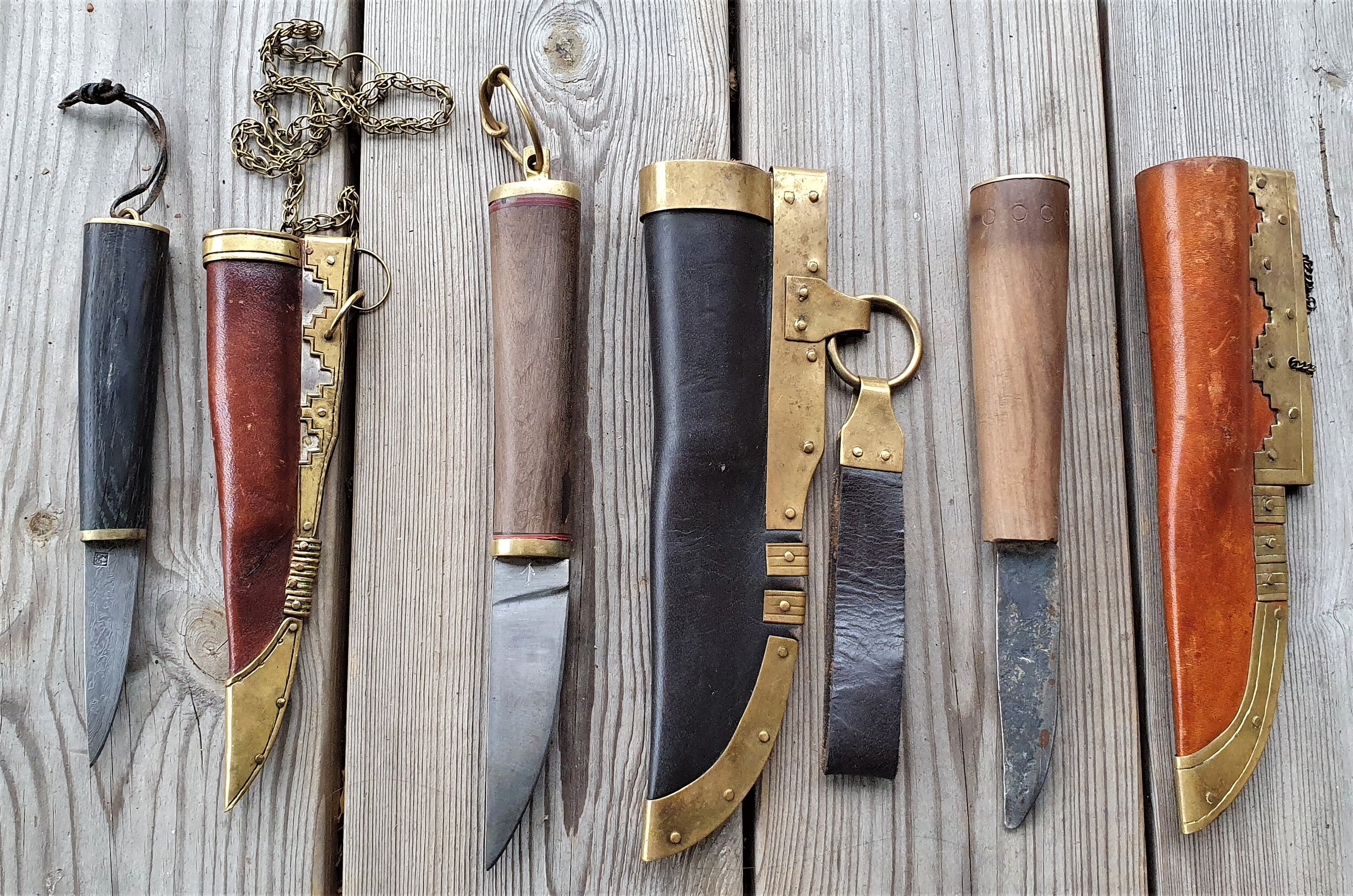Vegard Vike NORWEGIAN VIKING SWORD LECTURE by Tyr Neilsen
/The Viking sword was one of the most important weapons in Norse society during the Viking Age, and is one of the most recognizable historical weapons in the world.
In 1919, Jan Petersen created his dissertation De Norske Vikingesverd (The Norwegian Viking Sword), and for a century it has been the standard in archeology for classifying the weapons of the Viking Age.
100 years after Petersen created his dissertation, Vegard Vike, conservator at the Cultural History Museum in Olso, held a fascinating lecture to celebrate Petersen and his work at the Midgard Viking Center.
JAN PETERSEN LEGACY
The Midgard Viking Center lecture room was filled to capacity with an audience eager to hear about Jan Petersen and his study on Viking swords, and Vegard Vikke didn’t disappoint. Vegard, who works with the preservation of archaeological finds in Norway’s Cultural History Museum, and handles the very swords Petersen wrote about, gave a riveting lecture which covered Petersen’s life, his work and the legacy he left behind.
Vegard focused first on the life and work of Norwegian archaeologist Dr. Jan Greve Thaulow Petersen (October 20, 1887 - March 03, 1967). Petersen graduated with a Master of Philosophy in History In 1914, at the age of 27, and worked as assistant of the Cultural–Historical Department in Stavanger Museum. A year later, Petersen became curator at the Kulturhistorisk museum (Museum of Cultural History in Oslo) where he worked until 1923.
At the Museum of Cultural History, Petersen’s responsibilities included working as conservator at the University's Oldsaksamling (antiquities). Here he documented the artefacts from a burial ground at Store Dal in the south-east of Norway. In 1916 his work was published in the book Gravplassen fra Store-Dal i Skjeberg, the first volume in the series Norske Oldfunn (Norwegian ancient finds).
In 1917, at the age of 30, Petersen married Gerda Holtermann (1892–1985). In 1919, Petersen obtained a doctorate in archeology with the thesis De Norske Vikingesverd (The Norwegian Viking Sword). In 1922 the Petersen’s had a daughter, Liv Petersen, and shortly after, they all moved to Stavanger, in the south-west of Norway.
From 1923 to 1958, Petersen was director at the Stavanger Museum. Whilst he was there, he did a great deal of work on excavating the area’s Iron Age farms, worked on the preservation and restoration of the Utstein monastery, wrote Viking Age Jewelry in 1928 and Viking Age Tools in 1951.
As director of the Stavanger Museum, Petersen began popularizing archaeology, and in 1928 he was elected to the Norwegian Academy of Sciences. In 1948 Petersen was given The Royal Norwegian Order of Saint Olaf (Knight 1st Class), but of all of his achievements, Petersens legacy is his work on The Norwegian Viking Swords which has been the standard and authoritative work on Norse sword typology.
THE NORWEGIAN VIKING SWORD
De Norske Vikingesverd - En typologisk- kronologisk studie over vikingtidens vaaben (The Norwegian Viking Sword: A Typological-Chronological Study of Viking Age Weaponry) is the most complete and masterly study of Viking swords, and remains an invaluable guide today for anyone researching the many types of Viking sword. When Petersen created his dissertation, he had about 1000 Viking sword finds to work from. In the following century, many more Viking swords have been found throughout Scandinavia, with a majority of 3500 being found in Norway.
During the part of the lecture where Vegard focused on Peterson’s work with the Viking sword, he explained that while Viking swords may look similiar across the board, Petersen identified 26 different types of Viking sword that were in common use from the 8th century and onward.
In his dissertation, Petersen categorized the swords into types A – Æ, based on the shape of the hilt, as well as several subtypes. Petersen mainly defined the Viking swords by their hilt and pommel variations, even though blade types were dissimilar.
Petersens categorization of Viking swords
With the exception of just a very few Viking swords that are over 100 cm, most Viking sword blades range from 60 centimeters to 100 centimeters long (24 in to 39 in), with 70 to 80 cm (27 to 31 in) being the most typical blade length. Some blades had deep, wide fullers, and almost exclusively all were one-handed swords. Most Viking swords have two sharp edges, but single edged Viking swords were extremely popular in the 9th century, especially in Norway. In fact the longest Viking sword that has been found is single edged and is an incredible 107 cm (42 inches or 3 ft 6in).
Vegard showed how everyone interested in this field benefited from Petersen’s work on Viking swords, and how they and the experts that have created their own categorizations have used his dissertation as a foundation for each new documentation during the last century.
Vegard talked about what has been uncovered in the last hundred years, how modern technology has revolutionized the study of these magnificent weapons that are over 1000 years old, and about new findings and research that have corrected and improved the typology of the sword. Through it all, Vegard never strayed too far from showing how Petersen was a pioneer in this field and how the core of what is being done is still Jan Petersen's work.
Tyr Neilsen with Vegard Vike at his lecture on Norwegian Viking Swords














































